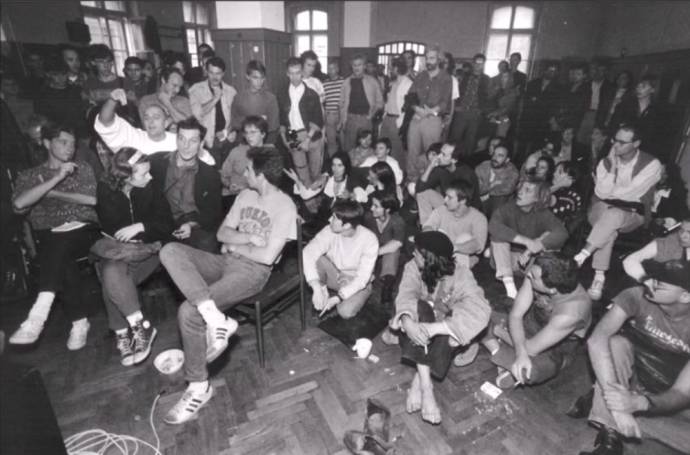September 7, 2018
On September 10th, 1993, a group of about 200 people occupied the northern part of Metelkova barracks to prevent any further demolition to this part of the complex, which had started a day before, officially beginning what is today known as Metelkova mesto, a lively and colorful public space near the city centre of Ljubljana.
The Belgian Barracks, as the closed pavilion system of buildings was initially named after its honorary commander, the King of Belgium, was built in 1895 to meet the needs of the Austro-Hungarian army.
After WWI the barracks became a public institute for the education of the blind, and since they were built close to the railway station the Italian occupation forces used them as a gathering point for those citizens of Ljubljana sent to concentration camps during WWII.
After WWII, the Yugoslav People’s Army (YPA) moved into the barracks, where a young Mladina magazine writer Janez Janša was also imprisoned at the start of the so-called JBTZ trial in 1988.
After the Berlin Wall fell, demilitarization took off as a viable option all over the world, partially as the need for huge military supplies diminished, and partially as a utopian political peace project. The initiative of the Movement for Culture and Nonviolence (Gibanje za kulturo miru in nenasilja) to transform the barracks into a cultural centre had high expectations of success, as the YPA was already negotiating with the city to move out of the city centre. So the conflict of interests between the emerging civil society and the development plans of the city were there even before the Yugoslav Army left the country. In 1991 the premises were emptied and the new owners, without any plans that would maintain the buildings, allowed an informal network of cultural and artistic groups to use the premises for their activities.
On September 9 1993, however, many of the otherwise sound building structures were partially demolished, presumably to prevent the possibility of renovation while also allowing the space to be cleared for various development projects.
The next day and night were crucial in the series of events that eventually led to what we know today as Metelkova, as over 200 volunteers squatted the premises to prevent any further demolition of the already damaged buildings.







